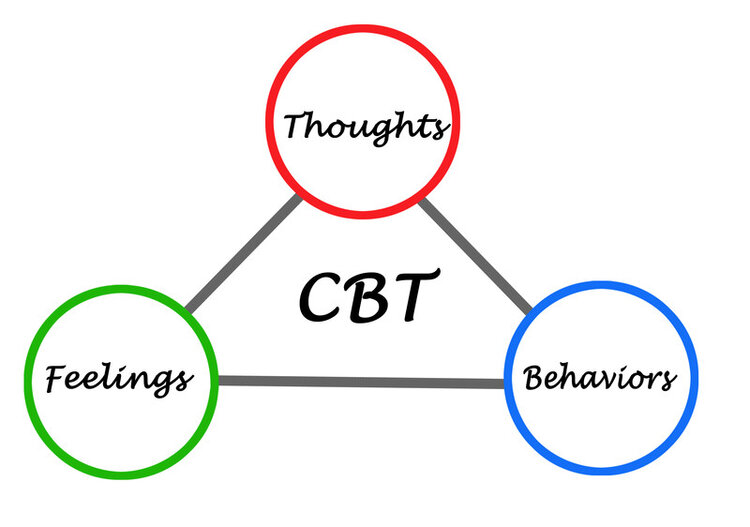CBT and Its Different Components
Few of us know about how CBT has shifted things around in the field of mental health, in particular, and healthcare, at large.
For the past six decades or so, thanks to the application of Cognitive Behavioral Therapy, we have been able to fully understand why and how our clients behave the way they do. We have been able to find ways to help them both in the short term and in the long term. And we’ve been able to help them gain transferable skills; Skills that they can use in different contexts, and for different aspects of their lives.
But, how does that really work? What is the mechanism of all this?
The short answer is in the CBT Model of: Thoughts, Feelings, and Behaviors. While the long answer is in the Belief-Result Pathway. While the CBT Model helps give a shortcut to what’s going on, the Belief-Result Pathway helps us fully appreciate how things work, giving us more options and more places to intervene, especially when working with those who have failed to benefit from prior trials of CBT. This Pathway also helps us better help our clients capture and understand the world.
The Belief-Result Pathway is bidirectional, and its components make up the components of CBT. Let us, then start citing the components of the Pathway, define each one of them, while also outlining the relationship between them.
Let’ start with the origin of the Pathway and go beyond the completion of the Pathway to ensure a comprehensive understanding. From the least hidden (obvious) to the most hidden (or obvious), we have, in this order, our:
-
Trifactor/Triad Phenomenon (Genetic/Experience (Environment/Memories) Epigenetics)
-
Created/Normal Blueprint
-
Belief
-
Values/Preferences and Attitude
-
Perception (Internal)
-
Meaning/Interpretation/Story
-
Focusing/Attention/Associations
-
State/Emotion/Feeling
-
Response/Action/Behavior
-
Habit
-
Result/Identity
From the least hidden (obvious) to the most hidden (or obvious), we simply ought to reverse. We simply go from 11 to 1. This, at times, helps clinicians appreciate how the Pathway does work like a circle.
Now, let us operationalize 5 of the primary components of the Pathway:
-
Belief:
-
A long-standing thought.
-
Formed from an unconscious thought rehearsal Process.
-
Created through the practice of a thought.
-
Result of a regular, frequent, and intense thought repetition.
-
Repetition, practice, or rehearsal may have taken place either at a conscious or an unconscious level.
-
That which determines our attitude and values.
-
-
Attitude:
-
Outlook.
-
Viewpoint.
-
Mindset.
-
Frame of Mind.
-
Internal representation of one’s state of mind.
-
Perspective.
-
Where one is looking from.
-
Internal representation of how one thinks.
-
That which determines one’s perception.
-
-
Perception
-
Seeing.
-
Looking.
-
How one sees or looks, based on one’s attitude or state of mind.
-
That which determines one’s meaning and interpretation.
-
-
Meaning
-
Interpretation.
-
Story.
-
That which determines why one focuses on what.
-
Salience.
-
Explanation.
-
Reading.
-
Prominence.
-
-
Focus
-
Center.
-
Center of Interest.
-
Focal Point.
-
Attention.
-
Center of Attention.
-
Point of Convergence.
-
That which one eventually sees and looks.
-
That which determines associated thoughts.
-
That which determines which state of mind gets activated; which mood gets displayed; which emotions get associated; and therefore, which feelings are shown.
Our thought is the operant factor. Our thought, when focused upon, drives our feelings, which, in turn, drive our behaviors. Now, of course, the reverse is also true, though a caveat.
 The caveat is this:
The caveat is this:
If we work on our clients’ beliefs and shift them, any shift in behaviors and feelings will automatically take place.
On the other hand, if we work on our clients’ behavior, alone, we have enough tools to help them shift their behaviors, especially through behavioral substitution. This behavior shift may lead to a shift in belief, but such a shift in belief will be rather temporary. For the shift in belief was only because, at an unconscious level, our clients wanted to avoid cognitive dissonance (a concept we will talk more about, as we move along with our Certificate Course). Once the conflict is over, the clients are more likely to return to their baseline beliefs.
All this is great news.
It means, through CBT, we can help our client’s short term, relieving their suffering, without the side effects of many medications, while working with them long term and address their belief systems.
Much more to come. We look forward to seeing you at our next session in the Course, where we will be addressing a very crucial aspect of CBT. CBT and Cognition.
SWEET Institute’s mission is to break down and make available to all clinicians throughout the world the best of all evidence-based practices, as well as the principles upon which they are based.
Thank you for taking part in this.
Until soon,
Karen and Mardoche









